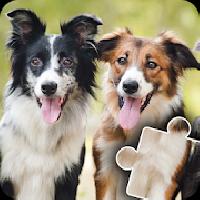|
Tips for Cats and Dogs Jigsaw Puzzles Game:
- Start with easy puzzles: Begin with jigsaw puzzles that have fewer pieces and simpler designs. This will help build confidence and familiarity with the game.
- Sort the pieces: Separate the edge pieces from the rest. Look for straight edges to form the frame of the puzzle first.
- Focus on colors and patterns: Pay attention to the colors and patterns on the puzzle pieces. Look for pieces that have distinctive features to help identify where they might fit.
- Build small sections: Instead of trying to complete the entire puzzle at once, focus on creating smaller sections and then connecting them together. This approach can make the process more manageable.
- Use the picture as a guide: Refer to the picture on the puzzle box or in the game as a reference. It will give you a clear idea of how the puzzle should look when completed.
- Rotate and try different positions: Sometimes, a puzzle piece might appear to be a poor fit initially. Try rotating the piece or experimenting with different positions before ruling it out.
- Work on one area at a time: Concentrate on a specific area of the puzzle rather than randomly picking pieces. It helps to establish a sense of order and progress.
- Take breaks: If you're feeling frustrated or stuck, take a short break and come back with a fresh perspective. Puzzles are meant to be enjoyable, so don't hesitate to step away and return later.
- Collaborate with others: Working on the puzzle together with friends or family members can be a fun and engaging activity. Share ideas, assist each other, and celebrate accomplishments together.
Tricks and Strategies for Cats and Dogs Jigsaw Puzzles Game:
- Create a puzzle-solving routine: Develop a systematic approach to solving puzzles. For example, start by finding all the edge pieces, then sort the remaining pieces by color or pattern.
- Assemble recognizable sections first: Look for parts of the puzzle that feature distinct objects or characters, such as the face of a dog or a cat's tail. Completing these sections early on will provide a sense of progress and motivation.
- Organize pieces by shape: Group similar-shaped puzzle pieces together. This helps in identifying potential matches and reduces the time spent searching for the right piece.
- Use a puzzle mat or board: If you're playing with physical puzzles, consider using a puzzle mat or board. It allows you to easily move and store the puzzle while keeping the pieces organized.
- Take advantage of puzzle-solving tools: Some digital puzzle games offer helpful features like piece rotation, preview mode, or a ghost image overlay. Utilize these tools to make the solving process more efficient.
- Practice patience and persistence: Completing a jigsaw puzzle requires patience and perseverance. Don't get discouraged if it takes time. Enjoy the journey and celebrate each piece you successfully fit together.
|






















